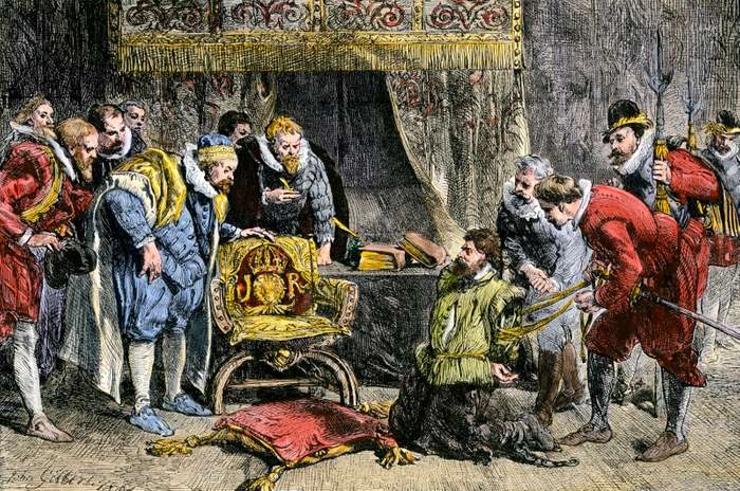5.11. 1605 Gunpowder Plot
Categories: Years of war and revolution , Calendar

As early as May 1604, a group of conspirators had been planning a coup in England. The so-called Gunpowder Plot was intended to put Princess Elizabeth on the throne and get rid of King James I. The assassination attempt ultimately failed, and all the rebels were executed.
The Gunpowder Plot had fairly solid foundations. Although according to some historians, it is suspected that it was a orchestrated action by some government officials to deal even more vigorously with the Catholics. It had been planned since May 1604, led by Robert Gatesby, who was supported by wealthy noblemen from Catholic families.
The aim of the conspiracy was to blow up the House of Commons. It was assumed that the King, after whose death Princess Elizabeth would ascend the throne, would be present. All this was to take place on 5 November 1605 at the opening of Parliament. In addition, the conspirators wanted to kidnap the King's children, who were not present. Their aim was to provoke a rebellion in the Midlands.
But the plotters' plan was uncovered in time. Some of the assassins had warned their Catholic acquaintances not to attend Parliament. And so, on the night of 4 November, the underground of the House of Lords was searched. Guy Fawkes was there guarding the timber line near the twenty barrels, it was clear what he and his cronies were planning. He also had a clock, a cigar box and some ice-paper.
The trial of the conspirators began in January 1606, and the outcome was a foregone conclusion. They were all executed.
"The whole affair has the elements of a very ill-conceived, amateurish enterprise, but the discovery of which brought Henry Garnet, the superior of the Jesuit order in England, to the scaffold. Moreover, the Jesuits were ordered to leave the island and all subjects were required to take new oaths of allegiance in which they expressly renouncedof the Bishop of Rome," write Drahomír Suchánek and Václav Drška in their book Church History - Modern Times.
However, this requirement provoked disapproval among many, because the commitment crossed the political, state level and interfered with the sphere of personal faith and conscience. On the other hand, James I tolerated crypto-Catholicism in all who submitted and avoided massacres. But some did not escape death.
„V 16. In the 16th century, 105 Catholic martyrs were hanged, drawn and quartered at Tyburn, and in 1606, theman to this fate, Guy Fawkes and his co-conspirators in the Gunpowder Plot," writes Lewin Lyons in A History of Punishment: Judicial Punishment from Ancient Times to the Present.
Sources.
The article is included in categories: